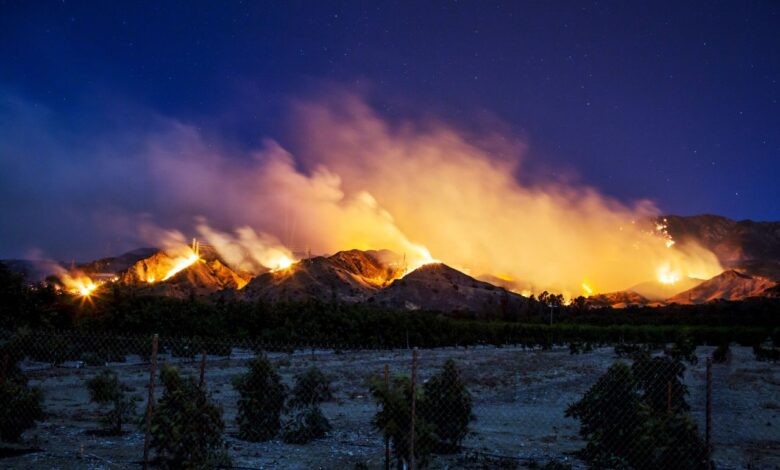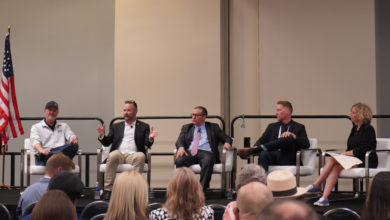Biden-Harris Administration invests in artificial intelligence (AI) to help fight wildfires

The Thomas Fire burns along a hillside near Santa Paula, California, on December 5, 2017. (Photo KYLE GRILLOT/AFP/Getty Images)
SAN DIEGO (FOX 5/KUSI) — The Biden-Harris Administration has invested thousands of dollars into the use of artificial intelligence (AI) to help fight wildfires.
The Biden-Harris Administration has invested $250,000 to support the development of a powerful new artificial intelligence (AI) model, which will improve fire weather forecasts through better lightning prediction, the Department of Commerce and NOAA announced on Thursday.
This funding is part of a larger Bipartisan Infrastructure Law (BIL) investment to improve fire weather research from President Biden’s Investing in America agenda.
“This investment, made possible thanks to President Biden’s Bipartisan Infrastructure Law, will significantly improve NOAA’s fire weather forecasts while safeguarding firefighters who risk their lives each day to serve Americans impacted by wildland fires,” said U.S. Secretary of Commerce Gina Raimondo.
With this new funding, the Center for Satellite Applications and Research, which is part of NOAA’s National Environmental Satellite, Data, and Information Service (NESDIS), and the University of Wisconsin Cooperative Institute for Meteorological Satellite Studies (CIMSS) will create a customized version of LightningCast.
This AI model uses imagery and data from NOAA satellites to predict lightning strikes within the next hour at any given location, including those around wildland fires.
NOAA says it continues to work to develop products to help first responders stay safe during wildland fires by testing the improved LightningCast tool and related research on early detection of dangerous fire-generated thunderstorms.
“Wildland fires pose a major threat to our nation,” said Assistant Administrator of Commerce for Environmental Observation and Prediction, Michael C. Morgan, Ph.D. “NOAA remains committed to finding ways to use AI, machine learning and other technologies to improve the accuracy of our forecasts and warnings, and better serve first responders as they work to protect lives and property.,”
In the United States, from 2013 to 2022, there were an average of 61,410 wildland fires annually, with an average of 7.2 million acres burned each year, the National Interagency Fire Center reports. In 2022 alone, 68,988 wildland fires burned 7.6 million acres.
Incident meteorologists (IMETs) at NOAA’s National Weather Service use LightningCast to provide real-time information to wildland fire incident teams about the risk of lightning strikes nearby, which can start a new fire.
California is no stranger to using AI to help fight wildfires. In August 2023, a new initiative was announced, part of a pilot program in collaboration with the University of San Diego’s Alert California program, which monitors 1,039 cameras placed throughout the state to keep track of potential active wildfires and other natural disasters.
Cal Fire has invested more than $20 million into the program in the last four years and plans to contribute another $3.5 million in the coming years.
The wildland fire-focused version of LightningCast began testing in August 2023. NOAA says it plans to transition LightningCast to an operational status in 2025, while users continue to explore the tool and provide feedback during this year’s wildland fire season.
“LightningCast is continuing to evolve to meet the demand for timely and actionable information,” said Mike Pavolonis, NESDIS Wildland Fire Program manager. “LightningCast is one of several new satellite-based tools NOAA is developing to address the increasing wildland fire challenge.”
Visit NOAA’s Bipartisan Infrastructure Law website to learn about current and future funding opportunities.



